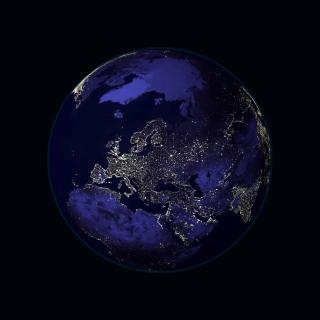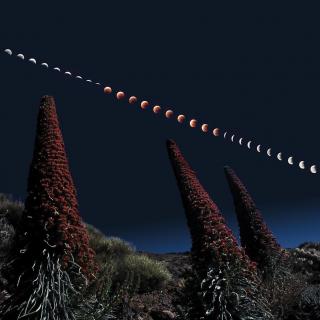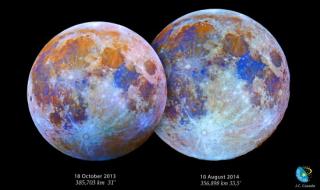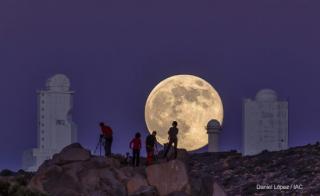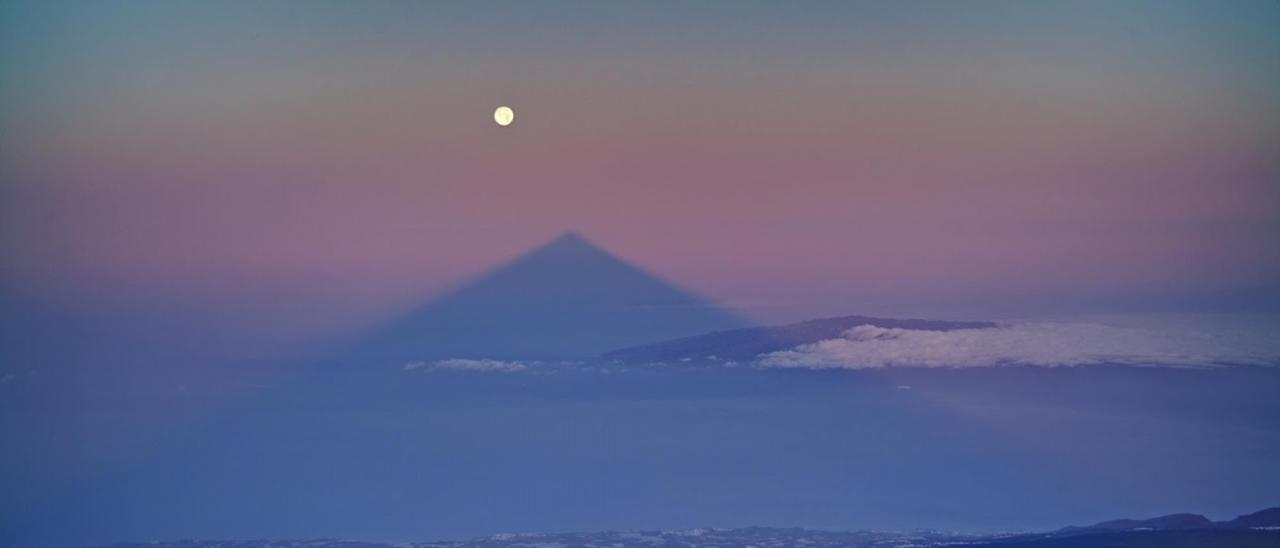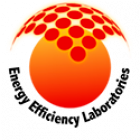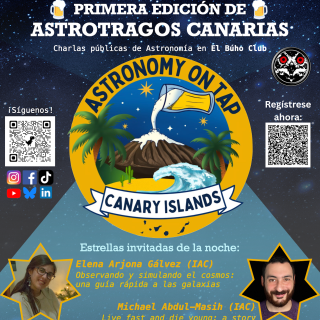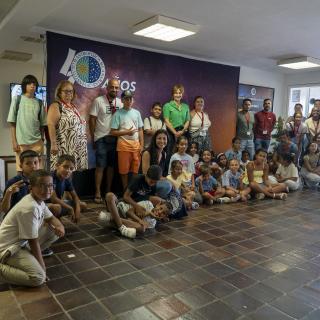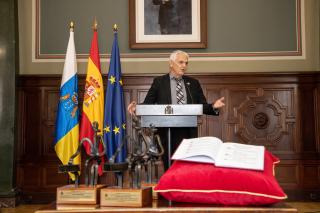On March 9th we can see the second “supermoon” of this year, and the last full moon of winter in the northern hemisphere, (summer in the south).With the collaboration of the EELabs project, coordinated by the Instituto de Astrofísica de Canarias, sky-live.tv will broadcast live, from the Teide Observatory, the rise of the “supermoon” which will be aligned in the evening with the shadow of the volcano which tops the summit of Tenerife.
The term “supermoon” was coined only a few decades ago. The diameter of the Moon observed from the Earth varies, because its orbit is not a circle but an ellipse. It looks smaller when it is at its apogee, when its distance from Earth is a maximum, and bigger when it is at perigee, when its distance from Earth is a minimum. The “supermoon” is seen when the full Moon phase occurs at the time when the Moon is near its perigee. Its apparent diameter is then 14% bigger than its value at apogee, and its brightness up to 30% more. During the next “supermoon” its size and brightness will be greater by 12% and 29.2% respectively, compared to apogee. Using a specific number, on Monday 9th March the Earth-Moon distance will be 357, 404km compared to its maximum at apogee in 2020 of 406,690 km.
The reason that all “superlunas” are not the same is because the parameters of the Moon’s orbit are not perfectly constant, but vary due to the gravitational influence of the Sun, and to a much small degree the planets. So its period, of around 28 days, and the distances from the Earth of its apogee and perigee are continually subject to small variations over the years.
By the definition of a “supermoon” this is produced if full Moon occurs close to lunar perigee. So during this year 2020 we will have up to four “supermoons”, in February, March, April, and May. In fact this astronomical phenomenon is so usual that in general there are between three and five “supermoons” per year.
Alignment with the shadow of Teide and live broadcast
The live broadcast from the Teide Observatory will start on Monday March 9th from 18:45 UT. The astronomer of the Instituto de Astrofísica de Canarias (IAC) and administrator of the Teide observatory, Miquel Serra-Ricart will guide us through this astronomical event, during which we will see the full Moon aligned with the shadow of the volcano, just at sunset.
If we are at the summit of a mountain, close to sunset (or at dawn) it is possible to see its shadow along the line towards the Sun, but in the opposite direction. In the first moments the shape of the shadow reproduces the silhouette of the peak of the mountain, and as time passes the length of this shadow will grow as the height of the Sun over the horizon decreases, and its projection in the atmosphere ends up triangular.
Teide, because of its height, and because from its peak all the horizons are clear, is one of the best places to observe the formation and the evolution of the shadow of a mountain.
I the full moon and solar twilight are close together we can observe the shadow of Teide and the full Moon. And if in addition the time of full Moon coincides with sunset or dawn we can see a (close) alignment between the shadow of Teide and the natural satellite of the Earth, which we will see on Monday 9th.
EELabs (eelabs.eu) is a project funded by the Programme INTERREG V-A MAC 2014-2020, cofinanced by FEDER (European Fund for Regional Development) of the European Union, under contract number MAC2/4.6d/238. Five centres in Macaronesia (IAC, ITER, ULPGC, SPEA-Azores and SPEA-Madeira) work in EELabs. The objective of EELabs is to build laboratories to measure the energy efficiency of the artificial night lighting in protected natural areas in Macaronesia (the Canaires, Madeira, and the Azores).
EELabs web:
Images and more audiovisual content about "Supermoons"
Teide shadow images and videos:
